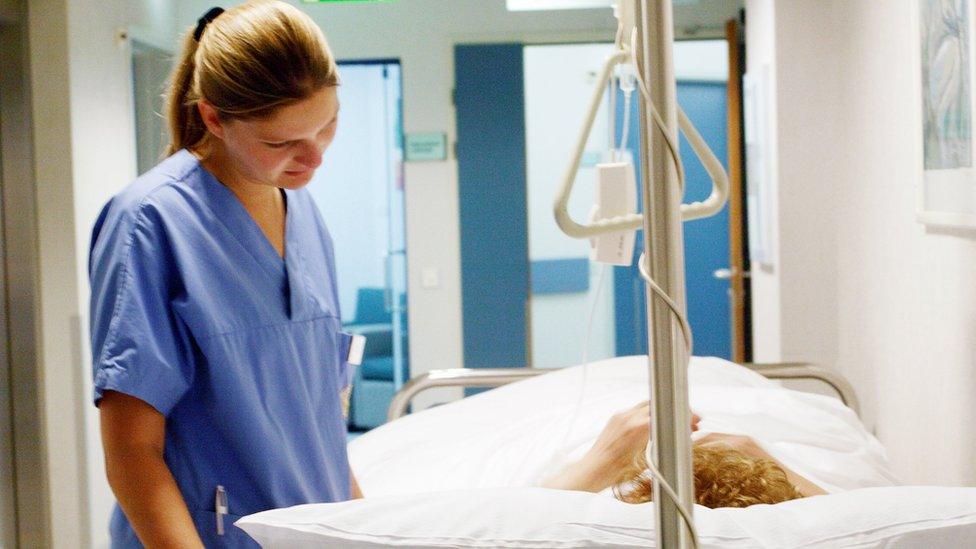A 'good Christmas' for the NHS - but what's to come?
- Published

The NHS in England has been said by its leaders to have had a "good Christmas period" - in the same week that there have been reports of black alerts and full hospitals in some parts of the country. So what is going on?
The positive message about Christmas performance came from Sir Bruce Keogh, its medical director. He said there were fewer serious operational problems than the previous year, and lower hospital bed occupancy rates.
His comments came after the publication of the weekly statistics covering the weeks over the festive season. They showed there were around 278,000 attendances at A&E units in the week leading up to 3 January, compared with just over 319,000 in the equivalent week last year.
There were 20 A&E units diverting patients to neighbouring hospitals because they were too busy, down from 26 in the same week the year before.
Sir Bruce does acknowledge that mild weather had something to do with the reduced pressure on hospitals, as well as what he described as extensive planning and the hard work of thousands of staff.
Different story?
As we now know, it turned out to be the mildest December since records began.
Judging by the headlines though a different story has unfolded this week.
The Manchester Evening News reported that operations were cancelled and emergency rooms packed at local hospitals.
A Norfolk hospital told patients to stay away unless their conditions were life-threatening.
Bristol hospitals were reported to be on black alert after what was described as "intense pressure" on services.
Sir Bruce acknowledged that this week pressures had emerged in some areas.
Hospital staff always say that the first week of the New Year is often the busiest. The first working day of the year can see large numbers arriving at their local A&E, having held off during the holiday period.
In early January 2015 there were almost daily reports of major incidents, ambulances backing up outside hospitals and pictures of trolleys lining corridors. The first few days of January 2016 so far has not brought anything quite so dramatic.

The NHS in winter: Want to know more?

Special report page: For the latest news, analysis and video
Winter across the UK: A guide to how the NHS is coping
Video: Why hospitals are under so much pressure
Video: How a hospital can grind to a halt

One reason the pressures on A&E have not created so many headlines this time is that NHS chiefs have told hospitals to think carefully before announcing they have problems with patient numbers.
Last year varying criteria were used by hospitals to flag up that they were struggling to cope with local demand and the term "major incident" was used in different ways, not always sending out the right signal to patients. A black alert can sometimes be declared and then withdrawn in a matter of hours.
We will not know how stretched the NHS in England has been this week until the next stats are out on 15 January.
They may paint a rather different story to the one set out in today's press release. And we won't know whether the 95% target for four hour waits in A&E in December has been missed and, if so, how badly till the full set of data is published in February.
While NHS England has retreated from weekly A&E performance stats to monthly, Scotland has moved the other way.
And there is no doubt quiet satisfaction at Holyrood that Scotland's major A&E units did better than the 95% target in the week leading up to 27 December - the best Christmas performance for five years.
That's food for thought for health chiefs south of the border.
- Published5 January 2016
